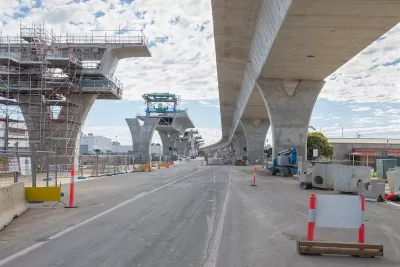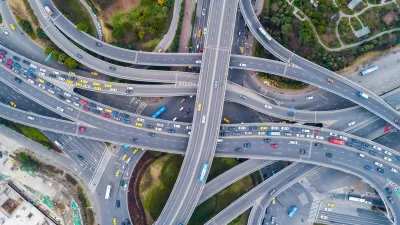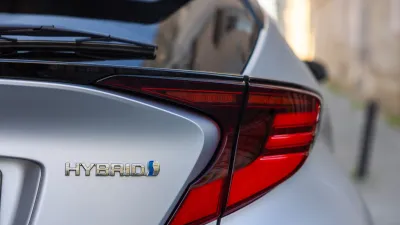With so much funding going to highway construction and expansion, the 2021 law could add 69 million metric tons of carbon to the atmosphere in the next two decades.

An analysis by Transportation for America reveals that the 2021 infrastructure law could ultimately add 69 million metric tons of carbon dioxide to the atmosphere by 2040.
Dan Zukowski describes the study in Smart Cities Dive, writing that according to T4A policy associate, Corrigan Salerno, “Nearly 25% of the [Infrastructure Investment and Jobs Act] formula dollars, specifically, states are spending towards highway expansion and another quarter is being spent towards highway resurfacing.”
Critics say highway expansion creates induced demand and contributes to increased carbon emissions. Zukowski notes that the study was released before the Biden administration announced potential changes to emission standards. “The revised rule is expected to look for EVs to account for less than 60% of new vehicles manufactured by 2030, according to sources cited by Reuters.”
Transportation for America Director Beth Osborne said “If the bipartisan infrastructure bill had invested in shifting our transportation spending from ineffective and damaging highway expansions to roadway repair, bridge replacement, public transit, safe streets and more housing close to jobs and opportunities.”
FULL STORY: Infrastructure law may increase transportation’s GHG emissions as states spend more on highways

Alabama: Trump Terminates Settlements for Black Communities Harmed By Raw Sewage
Trump deemed the landmark civil rights agreement “illegal DEI and environmental justice policy.”

Planetizen Federal Action Tracker
A weekly monitor of how Trump’s orders and actions are impacting planners and planning in America.

How Atlanta Built 7,000 Housing Units in 3 Years
The city’s comprehensive, neighborhood-focused housing strategy focuses on identifying properties and land that can be repurposed for housing and encouraging development in underserved neighborhoods.

In Both Crashes and Crime, Public Transportation is Far Safer than Driving
Contrary to popular assumptions, public transportation has far lower crash and crime rates than automobile travel. For safer communities, improve and encourage transit travel.

Report: Zoning Reforms Should Complement Nashville’s Ambitious Transit Plan
Without reform, restrictive zoning codes will limit the impact of the city’s planned transit expansion and could exclude some of the residents who depend on transit the most.

Judge Orders Release of Frozen IRA, IIJA Funding
The decision is a victory for environmental groups who charged that freezing funds for critical infrastructure and disaster response programs caused “real and irreparable harm” to communities.
Urban Design for Planners 1: Software Tools
This six-course series explores essential urban design concepts using open source software and equips planners with the tools they need to participate fully in the urban design process.
Planning for Universal Design
Learn the tools for implementing Universal Design in planning regulations.
Jessamine County Fiscal Court
Caltrans
Institute for Housing and Urban Development Studies (IHS)
City of Grandview
Harvard GSD Executive Education
Toledo-Lucas County Plan Commissions
Salt Lake City
NYU Wagner Graduate School of Public Service





























